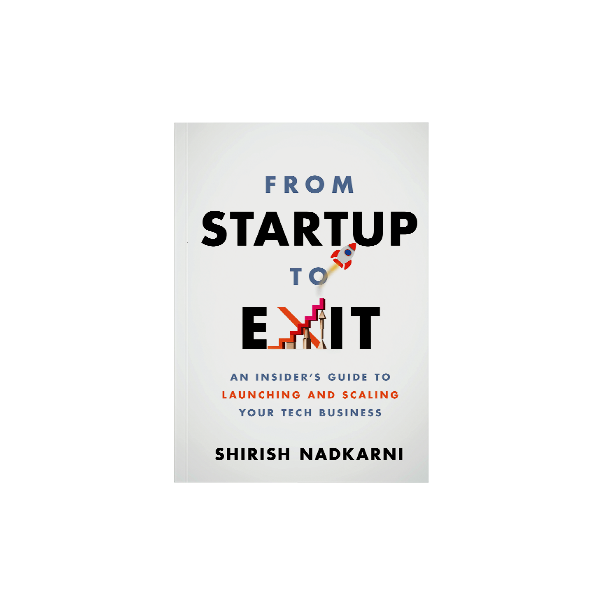Raising funding for your startup is often a monumental task. Most founders will spend at least a good third of their time over 3 to 6 months to raise funding for their startup. You should not underestimate the amount of time it will take you to build a compelling investor pitch. In fact, you will find that you will need to continue to iterate on your pitch even as you start presenting to investors to account for the feedback you are receiving.
Research your investors
Before you start pitching, it is very important that you spend time researching who are the right investors to pitch, making sure that they haven’t invested in competitive offerings. Even within a specific investor you should understand which partner has the expertise in your market segment. For example, some partners may focus only on enterprise solutions whereas some might just focus on B2C solutions. Location is also an important factor to take into account. If you are looking to raise funding from Angels, you should focus mainly on local Angels in your market. Angel investors very rarely invest in companies outside their immediate location. If you are a Seattle based company looking to raise a Series A, Seattle VCs and Bay Area VCs are your most likely target. You should also stage the sequence of your investor meetings — starting with the least important investors first so you can hone your pitch before meeting the really important investors. Finally, you should seek an introduction from someone who knows the investor well, ideally from a successful entrepreneur who the VC has invested in previously.
Pitch Deck Outline
For your pitch deck outline, I really like the business plan outline popularized by Sequoia Capital. Try to keep the main pitch deck short — ideally between 12 to 15 slides. Keep an Appendix handy to go over any details to address any questions that come up. Remember that your first meeting is mainly to pique the interest of the investor to get a follow-on meeting where you can go into more details about your product and market.
Storytelling
One of the most important aspects of a pitch I try to understand is the founder’s journey in starting their company. What is the specific insight or experience with the target market that they bring that has allowed them to build a compelling solution for the market. As an example, I am an investor and advisor to a company called Ally, which is a SaaS solution for managing OKRs. Prior to starting Ally, the founder had built his own internal solution using spreadsheets to manage OKRs at his previous company. However, he struggled in making this solution work effectively as spreadsheets were not the right platform for building this solution. He then built a custom application for managing OKRs and shared it with other founders and got excellent feedback. His experience gave him the insight and the confidence to start a new company to commercialize the solution that he had built.
Why Now?
Another aspect of storytelling is how you project the market opportunity to investors. It is not just a dry set of numbers on the potential TAM, rather a story of the trends sweeping your target market. In particular, you need to sell the investor on what changes are transpiring that make your solution ripe for the market. For example, in selling the vision around Livemocha, a social language learning solution, I described a world being swept by globalization, rapid adoption of broadband internet and social networking tools. It became relatively easy to convince investors that there would be billions of users who would turn to online language learning tools to learn English so they could get ahead in a globalized world.
Traction
As an investor, I generally have a hard time telling the great ideas from the merely good ones. What sells me the most is the traction that the company has achieved that demonstrates that they have achieved strong product market fit. However, traction is not simply a matter of number of users or customers that the company has acquired. I focus on understanding the true usage and retention that the company is achieving with its solution. If it is an enterprise solution, I try to understand what existing solutions the company is displacing and what costs the customers are saving as a result.
Unfair Competitive Advantage
Many of the presentations that I see simply provide a 2×2 matrix of the competition or a feature comparison grid. While that gives me some perspective of the overall competitive landscape, what I really like to understand is the company’s secret sauce and how sustainable it is. I love marketplace companies like OfferUp, Poshmark etc. as a growing installed base creates network effects that create unfair advantages for these companies. As another example, I also love companies leveraging AI/ML technology that have access to proprietary data sets specific to their industry which allow them to build unique machine learning models.
Go-to-Market Plan
This is generally the weakest part of the pitches that I have seen. Many technical founders are successful at building great solutions but have little understanding of how to really acquire customers and how much it is going to cost them to do so. I, therefore, recommend that startups conduct test marketing campaigns using SEM or Facebook advertising to understand if they can profitably acquire customers and which channels are the most effective in garnering customers. You can then also track other metrics like retention, repeat visits etc. to understand the Life Time Value (LTV) of the customers. Once you have a good understanding of these metrics, you are in a much better position to accurately describe your Go-to-Market plan.
Financial Projections
Most founders spend unnecessary time building detailed 5 year P&L projections. This is a complete waste of time as most investors will not take the time to understand these projections. However, it is important for you to build 12 to 18 month projections outlining how you are going to leverage your funding to achieve your next major milestone. For example, if you are raising a seed round, investors will want to understand if you can get to $1M ARR (Annual Recurring Revenue) which is essential to raising your Series A. If you have done the work above to understand your unit economics, it then becomes relatively easy to build P&L projections for the 12 to 18 month time period.
Team
Any investor will tell you that the team is the most important attribute of a startup. However, most pitches I have seen provide only a cursory overview of the founding team. What I really like to understand is not only what market specific expertise that the founding team brings to the market but also their history of prior accomplishments so that I have the comfort that the founding team really has the chops to do the heavy lifting to make their startup successful.
It is never too early to start developing your investor pitch. You will be surprised by how crisp your understanding will become of your startup idea and the progress that you will need to make to convince potential investors to fund your startup. It will also provide the foundation for your messaging to convince potential employees to join your company.
……………………………..
If you liked this article, check out my book that covers all aspects of the entrepreneurial journey.

